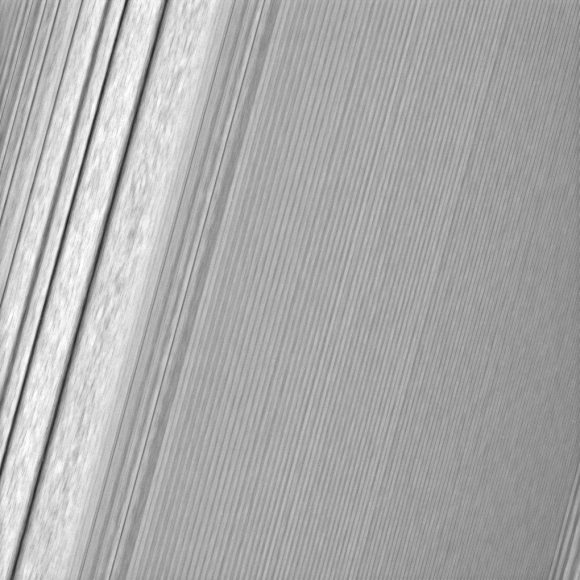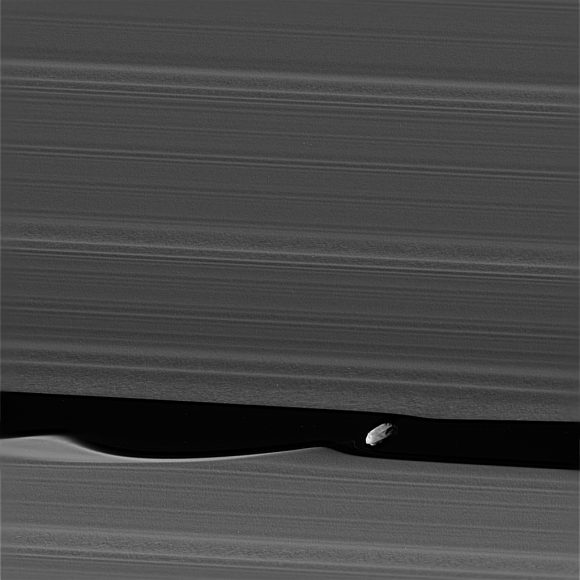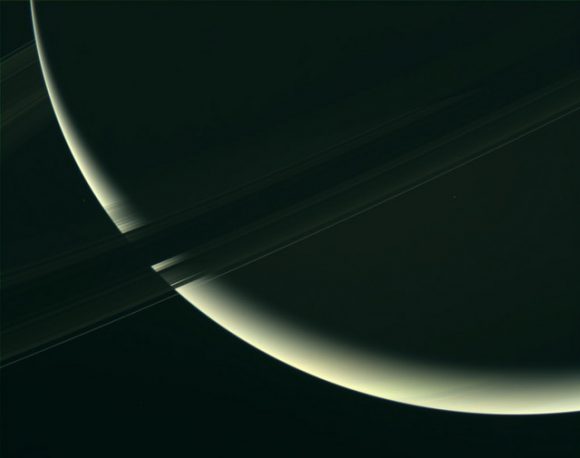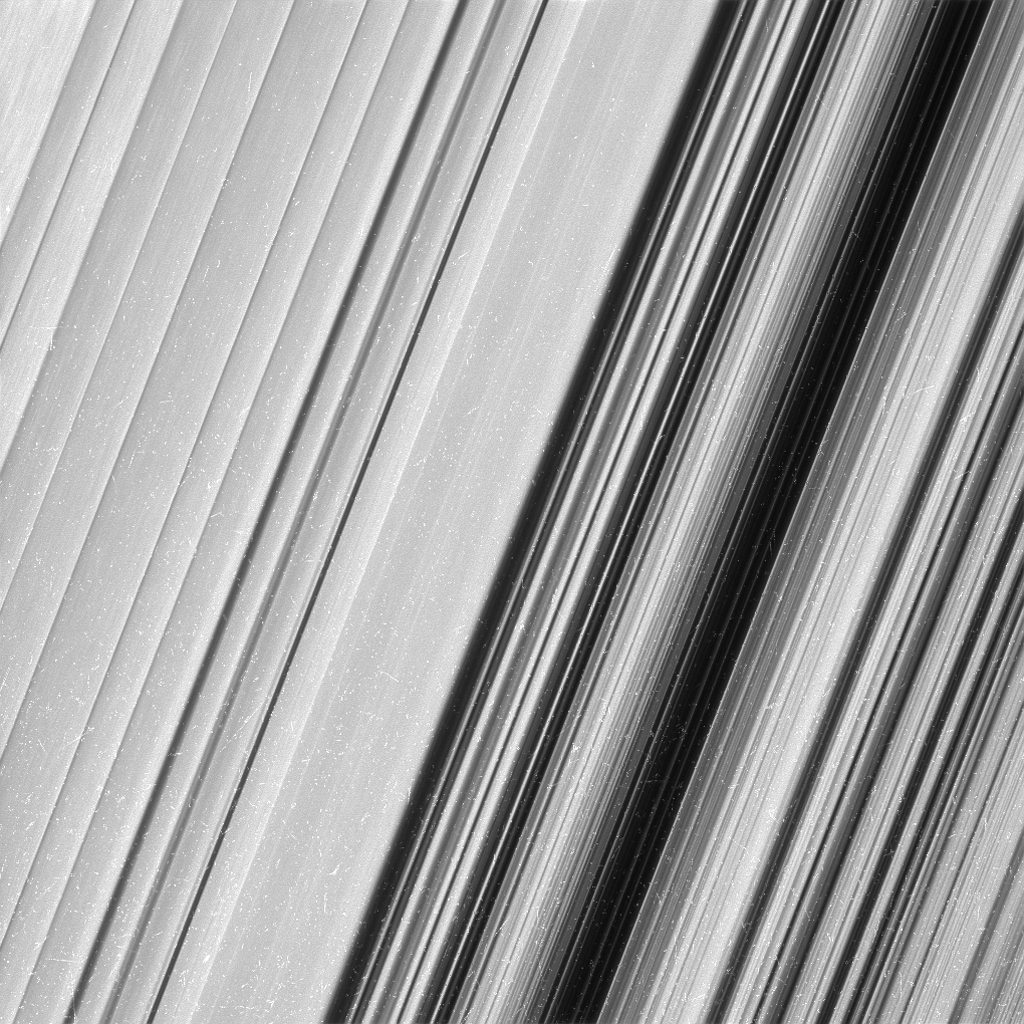As the Cassini spacecraft moves ever closer to Saturn, new images provide some of the most-detailed views yet of the planet’s spectacular rings. From its “Ring-Grazing” orbit phase, Cassini’s cameras are resolving details in the rings as small as 0.3 miles (550 meters), which is on the scale of Earth’s tallest buildings.
On Twitter, Cassini Imaging Team Lead Carolyn Porco called the images “outrageous, eye-popping” and the “finest Cassini images of Saturn’s rings.”
Project Scientist Linda Spilker said the ridges and furrows in the rings remind her of the grooves in a phonograph record.
These images are giving scientists the chance to see more details about ring features they saw earlier in the mission, such as waves, wakes, and things they call ‘propellers’ and ‘straw.’

As of this writing, Cassini just started the 10th orbit of the 20-orbit ring-grazing phase, which has the spacecraft diving past the outer edge of the main ring system. The ring-grazing orbits began last November, and will continue until late April, when Cassini begins its grand finale. During the 22 finale orbits, Cassini will repeatedly plunge through the gap between the rings and Saturn. The first of these plunges is scheduled for April 26.
The spacecraft is actually close enough to the ‘F’ ring that occasionally tenuous particle strike Cassini, said project scientist Linda Spilker, during a Facebook Live event today.
“These are very small and tenuous, only a few microns in size,” Spilker said, “like dust particles you’d see in the sunlight. We can actually ‘hear’ them hitting the spacecraft in our data, but these particles are so small, they won’t hurt Cassini.”
Stardust melody: @CassiniSaturn took these images as it stared at #Saturn’s faint & dusty G Ring. More on the rings: https://t.co/rH9bqqQCQd pic.twitter.com/ftMZMwYB1W
— NASA JPL (@NASAJPL) January 27, 2017
I talked with Spilker about ring particles for my book “Incredible Stories From Space:”
Spilker has envisioned holding a ring particle in her hand. What would it look like?
“We have evidence of the particles that have an icy core covered with fluffy regolith material that is very porous,” she said, “and that means the particle can heat up and cool down very quickly compared to a solid ice cube.”
The straw features are caused by clumping ring particles and the propellers are caused by small, embedded moonlets that creates propeller shaped wakes in the rings.

This stunning view of the moon Daphnis shows the moon interacting with the ring particles, creating waves in the rings around it.

NASA/JPL-Caltech/SSI/image editing by Kevin M. Gill
“These close views represent the opening of an entirely new window onto Saturn’s rings, and over the next few months we look forward to even more exciting data as we train our cameras on other parts of the rings closer to the planet,” said Matthew Tiscareno, a Cassini scientist who studies Saturn’s rings at the SETI Institute, Mountain View, California. Tiscareno planned the new images for the camera team.


Sad to see the end of the Cassini mission, but excited to learn NASA will use it to get the very last morsel of data before it’s plunge into Saturn’s atmosphere.
I’ve kept an eye on as much Cassini data that I could find on-line and have always been amazed, surprised and satisfied!
GO Cassini!